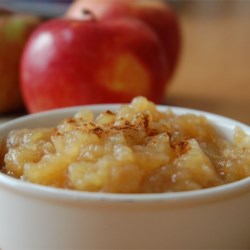Farm Update
 |
| A bin full of lovely squash blossoms! |
What to Expect in This Week's Share
- Choice between sweet corn and watermelon

We're looking forward to more watermelons in the share this week! - Choice between cherry tomatoes and potatoes
- Choice between broccoli and snap beans
- Choice between large leaf salad mix and regular salad mix
- Choice between apples, tomatoes, and Brussels sprouts
- Choice between kale and beets
- Onions for everyone!
Veggie Spotlight: Snap Beans
 |
| Green snap beans ready to harvest |
Beans are a warm weather plant that originated in the
tropical region between southern Mexico and Costa Rica. The name “beans” is actually used to describe
two different families of beans, the other being the fava bean type which
originated near modern Afghanistan.
However, the type most of us are used to in the U.S. is the type that
originated in the Americas. The first use of snap beans in human history is
difficult to pinpoint, but they are generally believed to have been cultivated
by humans as far back as 8000-5000 BC. Christopher Columbus recorded the use of beans
in the Americas after his first voyage, but the beans he probably saw the
natives cultivating were pole beans, which actually grew up the corn stalks they were planted next to, and produced beans over
a long period of time. Today we are much
more likely to see bush beans, which are much shorter and generally have a
shorter life cycle. They were first recorded
by European explorers in 1542AD. Often
referred to as “string beans”, snap beans used to have a tough string that had
to be removed down the length of the bean. Through natural breeding by the
farmer-experimenters of the past, this string is no longer found on any modern
varieties that are commonly grown today. The first snap beans also had much
tougher pods than the snap beans you get in your shares now. This is yet another example of how the good
work of natural breeders has improved the palatability and productiveness of
the food we enjoy today.
Like basically all vegetables, fresh green beans are
nutritionally better than the preserved type.
Beans are high in vitamin K and manganese. They are also loaded with a diverse group of
great antioxidants. To get the most nutritive value out of snap beans, eating
them raw, lightly steamed, or sautéed is the best way to go.
 |
| Rows of green bean plants growing in the field. |
At our farm, snap beans are always a staple summer
crop. We raise 5 different kinds of
beans: purple, red Romano, green Romano, yellow, and regular green beans. The green beans are the easiest to grow, as
the bush variety that we grow produces a lot of beans at the same time, and
they are usually held well above the soil.
This makes harvest easier, faster, and cleaner. The other varieties we grow are not quite as
productive, but are still the shorter bush types. Around this time of year we usually have
trouble with Mexican bean beetles, who chew holes in the leaves and beans, but his
year we have not seen as many around, likely a result of the hard winter and wet,
cool summer. Disease is less common on
this crop in general, but sometimes we see rust start to grow on the beans
later in September. The biggest issue we
have had this year is actually hairy thistle seeds blowing into and getting
stuck on the beans. They are almost impossible to wash off! Snap beans are a labor intensive crop, but
generally easy to grow and good competitors with weeds.
The snap beans you are getting in your shares have a fairly
simple life cycle. We seed them directly
into the field with our new field seeder. Then we water them with our dripline
irrigation system, in which a small perforated hose runs directly along the
base of the plant, giving the plant water exactly where it needs it. After this we do several cultivations. Usually our basket weeder and homemade two-row
cultivator take care of the weeding pretty well, but sometimes a little hand
weeding is still necessary. After this
we wait until just the right moment, where the maximum number of beans have
formed on the plant, but they have not yet gotten too tough to be delicious,
and then we harvest them. Unlike many
other veggies such as kale, where you can harvest over and over from the same
planting, there is just one harvest of per planting of snap beans. This is
because the first harvest is much higher quality then subsequent harvests. Since we only harvest once from each
planting, we actually plant a new batch of green beans every 10 days or so, so
there will always be a new planting ready to bring to the CSA. After the beans are harvested, we rinse,
spin, and bag the beans, and then distribute them to all of you at the CSA
drop-offs. Hopefully this gives you a little
more knowledge of how your food is grown, and about the history that got it to
your plate. Enjoy!
Recipes
Now that you're all thoroughly excited about the awesomeness that is a new bag of fresh green beans, here are 11 Fresh Green Bean Recipes from Real Simple! Give one of them a try this week, like these Green Beans with Bacon Vinaigrette.

























